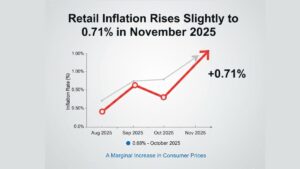India’s foreign exchange reserves witnessed a significant increase of $2.5 billion in the week ending November 24, as reported by the Reserve Bank of India (RBI). This boost, primarily attributed to foreign portfolio flows into the debt market, reflects a strategic move by the RBI to manage the rupee’s level.
Foreign Portfolio Inflows
- The surge in reserves is largely attributed to substantial foreign portfolio flows into the Indian debt market.
- Experts in foreign exchange suggest that the RBI strategically absorbed these inflows to regulate the rupee’s value, contributing to the overall growth in reserves.
RBI’s Management Strategy
- The Reserve Bank of India is believed to have actively managed and absorbed the foreign inflows to stabilize the rupee, a move that has played a pivotal role in the remarkable increase in the country’s foreign exchange reserves.
Gold Reserves on the Rise
- In addition to the influx of foreign portfolio investments, India’s gold reserves also witnessed a noteworthy uptick.
- Gold reserves increased by $296 million, reaching a total of $46.3 billion. This surge is attributed to a sharp rise in global bullion prices during the reporting week.
Rupee’s Record Low
- Despite the significant increase in foreign exchange reserves, the Indian rupee closed at a record low of 83.40 against the US dollar.
- This emphasizes the critical role played by the RBI in managing the currency’s value amidst global economic dynamics.
Important Questions Related to Exams
Q: How did the Reserve Bank of India (RBI) contribute to the rise in reserves?
A: The RBI played a key role by strategically absorbing foreign inflows into the debt market, effectively managing the level of the rupee and contributing to the overall increase in foreign exchange reserves.
Q: What additional factor contributed to the uptick in reserves, besides portfolio flows?
A: Gold reserves also witnessed a noteworthy increase, rising by $296 million to reach $46.3 billion. This rise was influenced by a sharp increase in global bullion prices during the reporting week.
Q: How did the RBI’s management strategy impact the Indian rupee?
A: The RBI’s active management and absorption of foreign inflows served as a stabilizing factor for the Indian rupee, despite the currency closing at a record low of 83.40 against the US dollar during the same period.
Find More News on Economy Here




 Retail Inflation Rises Slightly to 0.71%...
Retail Inflation Rises Slightly to 0.71%...
 India’s Foreign Reserves Touch $687.26 B...
India’s Foreign Reserves Touch $687.26 B...
 ADB Raises India’s Growth Forecast to 7....
ADB Raises India’s Growth Forecast to 7....







